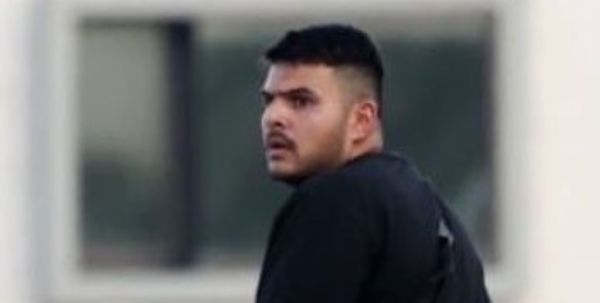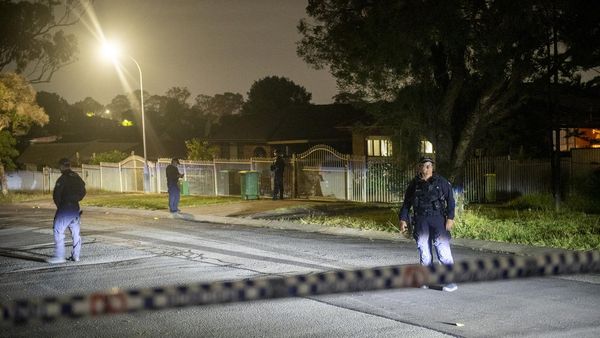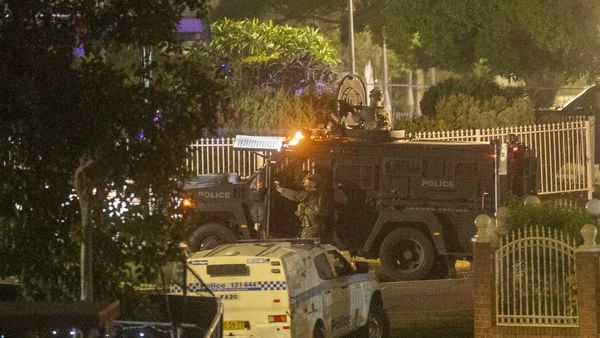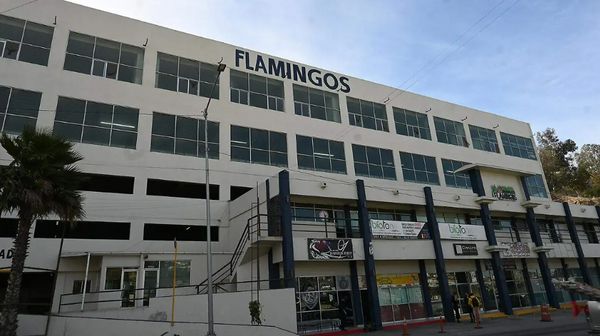
Keith Duckworth wasn’t a fan of the Ford DFV racing at the Le Mans 24 Hours. When legendary sportscar team boss John Wyer told him of his plan to put the Formula 1 engine into a new prototype bearing the Mirage name for 1972, the straight-talking Cosworth man told him not to bother.
The story is recounted by five-time Le Mans winner Derek Bell, who would remain on Wyer’s books after team sponsor Gulf stepped up to the plate to fund a new car in the wake of Porsche’s enforced withdrawal from the top flight of world championship sportscar racing at the end of 1971.
“John said, ‘I say Keith, I’m thinking of taking the Cosworth to Le Mans’,” recalls Bell. “Duckworth’s reply was, ‘I wouldn’t go, lad’.”
John Horsman, Wyer’s able subaltern since 1960 and who had now become managing director of the newly created Gulf Research Racing operation, doesn’t remember Duckworth’s damning indictment of his own engine. But he does recall his doubts about the endurance prospects of an engine that would become known as the ‘Ford Vibrator’.
“He might have suggested more than once that we shouldn’t waste our time,” says Horsman. “He certainly knew the shortcomings of the engine. I wouldn’t say he was against the DFV being used in sportscars, but he wasn’t very keen on it.”
But Wyer and Horsman reckoned they didn’t have much of a choice. Gulf’s name had replaced JW Automotive above the door at their Slough workshops and the oil company was funding a new Group 5 prototype to be known as the M6.
“Grady Davis, vice-president of Gulf Oil, wanted it, and what he wanted, he got!” says Horsman. “Gulf had actually had a cheap couple of years with Porsche, but he was ready to pay whatever it took.”
PLUS: The story of Porsche’s 917
Len Bailey was commissioned to design a new chassis, but what engine to put in the thing? Using the Cosworth, says Horsman, was “needs must – there was no other choice”. Wyer and Horsman knew all about the DFV. They had run one at the back end of 1969 in the Mirage M3. JWA had been the second team to get its hands on a Cossie in sportscar competition after Alan Mann Racing, which had used the engine in the back of its unsuccessful (though occasionally rapid) Ford F3L in 1968 and 1969. But JWA had been the first to win with it in sportscars.

Jacky Ickx triumphed in the rain in a non-points 500km race at Imola in September 1969. It had also been on course to win the championship race at the Osterreichring the previous month with the Belgian star and Jackie Oliver. A failed steering-column bracket – a part borrowed from the Ford GT40 with which JWA had twice won at Le Mans – deprived the new car of a clear shot at victory.
“We should have won in Austria but for the steering-column problem – we were well in the lead when it broke,” recalls Horsman. “It was actually a GT40 part that had done tens of thousands of miles, but of course the Cosworth vibration did it in. That engine would break everything if you ran it long enough.”
The vibration issue with the Cossie was all too apparent when the engine went into the M6 for 1972. There’s a story of the car shaking the spindles off its gauges on its shakedown at Silverstone early that year. Bell remembers the foam being shaken from the insert of his seat at the Osterreichring world championship round later in 1972. He had to brace himself against the side of the monocoque and eventually threw up.
Gulf and Horsman did have a Plan B of sorts for an engine to go in the back of the M6. Yet there were even bigger doubts about it than the DFV. Ford had commissioned a new V12 sportscar engine from British builder Weslake in the summer of 1970 and Gulf would have first call on it for 1973
By then, Gulf had already skipped Le Mans that year, deciding that the Mirage-Ford DFV wasn’t ready for the challenge. “The car was too new for the 24 Hours,” says Horsman. “It would have been a waste of time and money.”
There were Cosworths on the grid at Le Mans that year, just as there had been one the previous season. The ‘honour’ of blooding the DFV at the 24 Hours fell to fledgling constructor Guy Ligier and his hastily built JS3 prototype.
Gulf and Horsman did have a Plan B of sorts for an engine to go in the back of the M6. Yet there were even bigger doubts about it than the DFV. Ford had commissioned a new V12 sportscar engine from British builder Weslake in the summer of 1970 and Gulf would have first call on it for 1973. Yet the engine would never race in the back of a Mirage or anything else. At least, not until morphing into a 3.5-litre Group C powerplant bearing the badges of the reborn BRM marque nearly 20 years later.
“Dan Gurney had, of course, won the 1967 Belgian Grand Prix in his Eagle with an earlier Weslake engine, but he told me they couldn’t build two engines the same,” recalls Horsman. “We gave the Weslake a fair shot and did a lot of testing with it.”
PLUS: Dan Gurney’s 10 greatest races

That included taking a car to the Daytona 24 Hours, then a world championship round, at the start of the season. It didn’t race and when the Weslake-powered car, now with coupe bodywork, failed to run cleanly at the Le Mans test in April, the decision about what car to run in the race was made easy.
“Coming back on the plane I sat next to Walter [Hayes, the Ford man who’d signed off both the DFV and the Weslake V12] and he asked what I was going to do for Le Mans,” recalls Horsman. “My reply was, ‘Two open cars with DFV engines’. I didn’t have much choice.” It looked a good one, too, after Bell and Mike Hailwood won the Spa 1000Km in May 1973, the first world championship sportscar win for the DFV. It turned out to be a false dawn. Bell and Howden Ganley only got 29 laps into the 24 Hours before the transmission failed, though they would return to the track after four hours’ worth of repairs. The second entry, shared by Hailwood, John Watson and Vern Schuppan, crashed out of the race.
Gulf had swapped from a Hewland transmission to the ZF for Le Mans in the name of reliability, but it turned out to be another victim of the vibrating Cosworth. “We never had any problems with the ZF ’box before but put it behind a Cosworth and it broke input shafts,” explains Horsman. “John and I went to ZF to talk to them about it. They asked to be given a moment, went into a huddle and then came back and said they would make the shaft smaller. They told us it would allow it to twist and flex, and they were exactly right.”
A revised version of the M6, now dubbed the Gulf GR7, did make it to the finish at Le Mans in 1974, and in fourth place. But the car driven by Bell and Hailwood was 20 laps behind the Matra.
One year on and the French manufacturer was gone. Alfa Romeo, which dominated the world championship with its T33TT/12, opted to stay away, too, frightened off by a new rule that dictated that every car must complete 20 laps between fuel stops.
“There was definitely a window of opportunity for us,” reckons Horsman. “Alfa could easily have taken the win, but they said they couldn’t get down to the fuel restriction.”
The Gulf team’s response to the rules was the ‘new’ GR8 built around the existing chassis but with new bodywork that slashed the drag coefficient from 0.53 to 0.35. Power from the Cossie was reduced too, with the engine pushing out well under 400bhp with a rev cut in the region of 2000rpm.
The British team dominated Le Mans in 1975. Bell and Ickx, who’d written to old team boss Wyer asking to drive alongside a man with whom his name is forever linked, took a lead they would never relinquish after the first round of fuel stops. At half distance, they were a whopping six laps up.

The ‘Ford Vibrator’ still had a part to play, however. A broken exhaust late in the race meant its lead over the chasing DFV-engined Ligier JS2 was slashed. Bell was also disconcerted to be told after the race that an engine mount had failed.
The Cosworth ran in the GR8 as a stressed member, but Bailey had also designed in a rear subframe around the engine. “It didn’t carry any stress until the chassis broke,” explains Horsman, “but it ended up holding the car together.”
Gulf axed its sportscar programme at the end of 1975. The cars were sold to US entrant Harley Cluxton and would return to Le Mans in 1976 and take the runner-up spot to Porsche. A year later, the cars had Renault V6 twin-turbo power, but the Cosworth remained a staple of sportscar racing.
Rondeau, another privateer fighting against the factories, would give the Cosworth another victory in 1980, and the engine would race in 3.3 and 3.9 and later 3.5-litre form into the 1990s. Not bad for an engine that its creator reckoned had no business competing in long-distance racing.
Top 10: Ranking the greatest Le Mans cars








